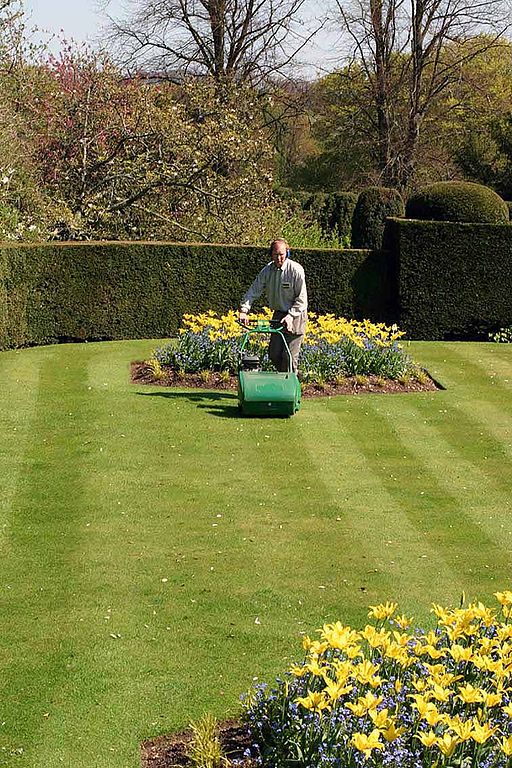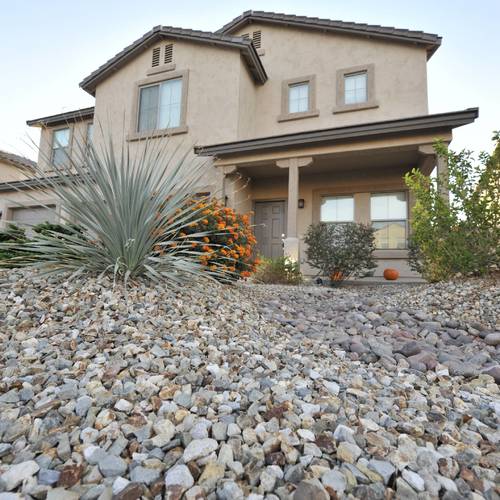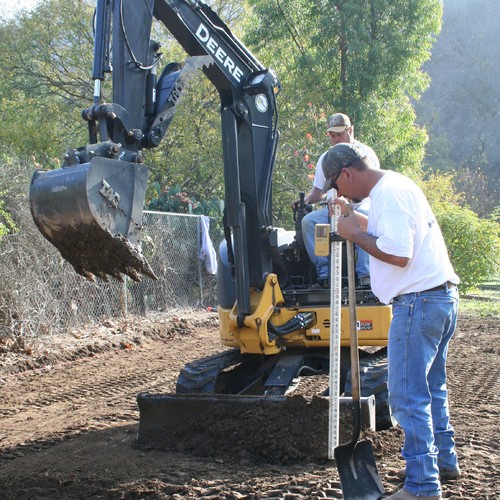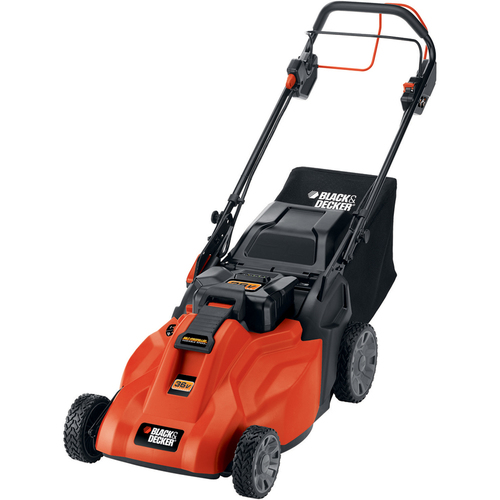
Image Credit: Si Griffiths/Wikimedia Commons
Because environmental challenges are so complicated, potential solutions are rarely as simple as they seem.
For example, the market for electric vehicles (EVs) is growing rapidly, outpacing hybrids, although the supply is nowhere near the million EVs that President Obama called for in his 2011 State of the Union address (which might be why he didn’t mention the topic this year).
Fewer cars running on fossil fuels are a good thing, right? Actually, a new University of Minnesota report finds that EVs can be worse for the environment than gas cars, depending on where they get their electricity. If the utility grid that charges them is powered by coal, EVs can produce nearly four times more deaths from air pollution. Because coal is the single largest source of grid energy in the U.S. (nearly 40 percent), alternative cars could be exacerbating an already enormous problem.
Similarly, conventional wisdom suggests that more plants are always beneficial to the environment, since they produce oxygen and store carbon. But a new study just published in the Journal of Environmental Management shows that closely cropped lawns — the mainstay of suburbia — actually can produce more greenhouse gases than they absorb.
The mowers, fertilizers, water, and other resources required to maintain the clean look of a hectare of grass can result in the equivalent emissions of an airplane flying more than halfway around the world. This confirms earlier research estimating that the emissions from lawn maintenance can be four times greater than the amount of carbon stored.
Lawns in the U.S. are a $40 billion frill
The total area of American lawns is approximately 50 thousand square miles, about the size of New York State. To keep it well watered takes about 200 gallons per person per day, and nearly a third of all residential water use goes toward landscaping, according to the EPA.
All that watering, weeding, mowing, and fertilizing is enormously expensive: Americans reportedly spend $40 billion and 3 billion person-hours on lawn care every year. Why? The landscape equivalent of a crew cut, a grass lawn isn’t that attractive; in fact, “lawn” stems from an Old French word originally meaning “barren land.” So what accounts for our costly, wasteful obsession?
Like the McMansion, which vaguely echoes European manors, the lawn is a status symbol, meant to evoke aristocratic precedent. Prior to mowing machines and mechanical watering, finely manicured lawns were expensive and labor-intensive, the trappings of wealth. They became popular in northern Europe after the Middle Ages, especially in France during the 18th century, and the gardens at Versailles introduced the thin swath of grass called tapis vert, “green carpet.” The effect was intended to be unnatural, an abstraction that seemed to float above the ground plane.
Millions of Americans invest incredible amounts of time and money to conjure up the ghost of Louis XIV.
Use the area to grow food
What are the alternatives?
For one, we could replace ornamental grass with edible plants. In Cities and Natural Process (2004), Michael Hough calculates that a typical lawn needs three times more energy (and associated costs) than an alfalfa patch of the same size.
In fact, the rate of energy to maintain a given area of residential lawn significantly exceeds the rate for commercial cornfields in the equivalent amount of soil. Garden lawns could become inevitable. Columbia University biologist Dickson Despommier estimates that to feed the expected population in 2050, we’ll need about 2.1 billion acres of additional land — roughly the size of Brazil.
Yet, today, more than 80 percent of arable land is already in use. If current farming practices continue, in a few decades there simply won’t be enough land to feed everyone. We may be forced to begin growing corn in our front yards. For now, the benefits are clear: locally grown produce tastes fresher and saves huge amounts of energy, emissions, waste, transportation, and infrastructure maintenance.
Or let it go back to a meadow
If you don’t want to eat your yard, you can just let it return to native meadow.
Middlebury College has reduced the area of its regularly mown lawns by 20 acres (26% of the total), letting those spaces become wildflower meadows instead. The plan has cut emissions and costs, including 670 gallons of gas and 1,000 hours of annual labor, and significantly expanded the natural habitat and beauty on the campus.
Native meadows, which have deeper roots, also are more drought resistant and produce less pollen than turf grass lawns. Yet, many residential communities not only discourage wild yards through peer pressure — they actually ban them. In Oak Park, Michigan, for example, it’s a criminal misdemeanor not to cut your lawn regularly. They’ve outlawed the little house on the prairie.
Rich with native grasses, herbs, and shrubs, prairies are amazingly fertile and resilient, surviving long droughts and torrential rains and protecting soils from erosion. Once they covered the entire Midwest, from Montana to Michigan, all the way down into Texas.
Today, only 1 percent of tallgrass prairie remains. Imagine if all 50 thousand square miles of residential lawns were converted to native meadows and prairie land, springing to life with edible plants that thrive in the local climate with little need for care. In addition to saving an astounding amount of energy, water, labor, and money, we could help resurrect the native state of the continent — right in our front yards.
Architect Lance Hosey is chief sustainability officer with the global design firm RTKL. His latest book, The Shape of Green: Aesthetics, Ecology, and Design (2012), has been Amazon’s #1 bestseller for sustainable design. This blog was originally posted at Huffington Post and is reposted here with the author’s permission.
Weekly Newsletter
Get building science and energy efficiency advice, plus special offers, in your inbox.















21 Comments
Ah yes, the evil lawn.
Martin addressed this critique some years ago. https://www.greenbuildingadvisor.com/blogs/dept/musings/defense-lawn
Argument not valid in the northeast.
without a lawnmower I would have a field surrounding my house in about 2 months.
meadows aren't permanent
Here in rural Maine, I mow my lawn. I don't ever water it or apply fertilizer or herbicide or anything else. My land is about half field and half forest. I cut the fields once a year, in the Fall. In Spring, the wildflowers grow, providing habitat for animals and bugs.
If I didn't mow, my lawn and meadows would turn into forest within several years. While the tall-grass prairie out west may have been more o r less permanent (until plowed under ,) here in the northeast, if left alone, the land becomes trees. While we all like trees, it is nice to have Sun shining on our PV panels and gardens. It is also nice to walk the dog in the grass, which is comparatively free of ticks, compared to fields.
I agree that lawns t hat require water and fertilizer are pretty silly. But then, I don't golf.
Lawns are great
Our lawn gets tons of use. It provides a great place for my kids to get outside and play. It is a community meeting and activity place. When we are outside on our lawn we aren't inside using lights and other electrical devices. It provides exercise for our family without having to get in a car to go to the gym. Working outside on my lawn mowing it provides weekly exercise for myself. When my lawn starts to green up again I just plain feel good allowing me to enjoy life without having to resort to take mood altering pills made by evil drug companies The list of the benefits is endless.
If you don't value lawns by all means live without one but please don't tell the rest of us how bad we are and try to pass laws that take what we enjoy away from us.
Has the new improved GBA been impacted by a hostile take over that is increasingly hostile to anyone that does share a very narrow viewpoint?
We'd love to have our yard in
We'd love to have our yard in CT become a meadow, but we also have Lyme disease up the wazoo in our area (being pretty much an hour away from... Lyme).
While the idea of a meadow is appealing, it's also a tick haven. Tromping through high grasses in this area of the US has a high probability of at least one tick coming home with you. They survive the laundry, and even the dryer, unless you use the high heat cycle for at least an hour to more or less cook them to death. So the rule here is that any clothes you wear into the woods or when gardening are off and into the laundry the minute you get indoors.
Lots of deer visits only add to the problem, but that's what you get for living in a wooded area. We're 20 minutes from New Haven, but it's still a jungle during the spring and summer.
Our neighbors have all had Lyme disease at some point or another, and we always do tick searches after every yard work session. My boss had Lyme AND West Nile... at the same time. It was close, but he survived.
We're trying to get more moss to grow on our yard instead, and eventually have pockets of native plants and edible plants to create a less "manicured" feel.
We've found ticks on our clothes a few times in the 4 years we've lived here, but luckily have not been bitten yet. Having to wear pants, hats and long sleeve shirts while working in the yard during the humid summer is NOT pleasant, but it's idiocy to do otherwise. Lyme disease can seriously mess you up.
Bottom line, the meadow idea is great, but in this area, any lawn converted into meadow would more or less have to be off limits for the home owners or their pets, which kind of blows.
Edited to add what others are mentioning... most of the "weeds" we pull are sugar maple sprouts; left to their own designs, they'd take over our lawn.
ecology
A lawn in and of itself is not good or bad, environmentally friendly or environmental disaster. The devil, as always, is in the details. The real questions are what inputs are required for the lawn, how much is required, and what are the effects of each input.
Note in the Martin blog linked above is this telling quote: "I have never planted any grass seed, applied any fertilizer, or watered this lawn. All I did was mow the wilderness." If that were the case for everyone's lawn, then lawns would be pretty environmentally friendly.
I'd also like to mention that if you want a place for kids to run, play ball, etc., you don't necessarily need "lawn" grass. A ground cover appropriate to your locale may work for you, such as white clover, prairie grasses, wild flowers, or mix any of these with "lawn" grass.
This is a subject that should
This is a subject that should be considered locality dependent. In California and the southwestern USA, and I suppose other arid climates too, it really doesn't make good environmental sense to keep a lawn even though I like them. They are water hogs and just increase the effects of drought. Areas like this require constant maintenance on the lawn to have a nice one. That includes fertilizer and weed killer.
I have a semantic bone to pick with those who call low growth plants that infill naturally a "lawn". I have something like that on my property. During the spring I mow it and from a very slight distance it does look like a lawn. In the summer and fall it doesn't and returns to its natural brown look. What I'm really doing is just mowing my weeds, not creating a lawn. I'm sure in areas that receive more rainfall it would pretty much look like a lawn year around if mowed properly. I still don't call that a lawn and it shouldn't be subject to the criticism this article has.
On that coal-fired EV thing...
Anybody find a web image of the actual U-MN report? Title? Author(s)?
The 100% coal fired grid example is a straw-man argument in the extreme, and I'm dubious that a serious academic would have used it. There are no 100% coal-fired local grids in the US anymore. WV comes close with coal being over 90% of all power generated (with more than half of that being exported to neighboring states), WY is next at a bit under 90%, also with high export fraction during off-peak.
Of those high coal-fired grids there is a dwindling fraction of low efficiency 40% efficiency super-critical plants.
Even on a heavily-coal grid if the car is being charged during off-peak hours it would sometimes be using power that would otherwise have been dumped (when there is no export demand) or exported to a neighboring region (to avoid having to ramp down, since the ramp-up is too slow to track the AM ramp), with no net effect on coal emissions by having the EV plugged in.
There is no simple model, which makes me very curious about how detailed they got in their analysis of the grid dynamics and the presumptions about when/how the EVs were being charged, and on what grid-source mix.
Eric: In CA the energy cost & energy use greenhouse gas emissions of municipal-system sourced water alone is significant enough to warrant dispensing with lawns, but under the current ongoing and deepening drought it's almost a crime. But the total amount of water used in cities (all purposes) is 1/4 that used by agriculture, and only about 1/3 of that smaller fraction comprising urban use is outdoors (everything from car washing to yard irrigation, backyard pools, etc.) If urban use is ~20% of all pumped, stored & metered water, 7% is used outdoors, maybe 2% is used for irrigating yards (lawns + shrubs + trees). http://i0.wp.com/mavensnotebook.com/wp-content/uploads/2015/01/2014-10-30-307PM2-POOLE_Page_04.jpg Even if all outdoor uses of urban water were discontinued, the effect on the overall water situation in CA would barely be small, but measurable.
Xeriscaping makes sense in any climate, and lawn-grasses are not particularly well adapted to much of the US- this isn't temperate western Europe, where lawns became popularized, then exported.
Lawn fertilizer runoff has resulted in toxic algae blooms (and higher than natural methane emissions, a potent greenhouse gas) in a local lake in my city. I don't care too much if people want to keep lawns, but would prefer that they not fertilize them or go crazy with chemical solutions to lawn maintenance. Pesticides used by one of my neighbors to get rid of lawn grubs 15 years ago pretty much eradicated the amphibian population on my property- didn't see a toad or salamander for more than a decade, though they have recently started to reappear.
Dana,
"If urban use is ~20%
Dana,
"If urban use is ~20% of all pumped, stored & metered water, 7% is used outdoors, maybe 2% is used for irrigating yards (lawns + shrubs + trees)"
I looked at those pie charts and that particular item on the second pie chart looks very suspect to me. I do not have proof that lawn watering is a bigger percentage of total residential outdoor water use than it shows but it just doesn't seem correct to me. Maybe it is but I have my doubts having lived here my entire life. It does not pass the smell test. Of course it could be a problem with my nose, Ha Ha.
It isn't clear in that pie
It isn't clear in that pie chart what the "large landscape" section means. Does it mean public and private common areas such as public and private school grounds and public parks etc? If it does, which seems a possibility, then it probably means that most of the residential outdoor water use is for gardening, with another large part for backyard pools. That makes a lot more sense to me. How often can you wash your car or the sidewalks?
re
I try not to encourage the small amount of lawn that I have because then I have to cut it more often
Using public drinking water for watering lawns ought to be illegal, period. Or course I have my own well so I don't care..........but seriously, all that processing to dump it on the ground. Enough already
Bringing up costs of lawns is a false argument. Anyone hire a gardener lately? Arborist? Lawns are cheaper than every alternative, except maybe gravel. IF you want a putting green, that may be pricey, but your average 1/4 acre of short green stuff is pretty cheap to produce and maintain.
You will not find me cutting down trees to make lawn, and I wish others did not, but you cannot have trees up against the house[unless you don't like the house], and you need to put something between the woods and the house, so lawn it is....
Yet again with the
Yet again with the predictions of mass famine and starvation. How many times will that canard be trotted out by the eco-terrorists? We were supposed to pass this point several times in the past already........just like we peak oil..............just like the predicted ice age...........the only thing consistent about the eco terrorists is they are consistently wrong in their predictions. The true goal of eco terrorism is control peoples lives...force them to live in closets...stuffed on top of each other in cities....take away their cars....tell them what they can do with water...tell them what light bulbs they have to use....
Folks who write about the
Folks who write about the evils of manicured lawns are folks who have lived only with lawns. Spend one month this summer in a mid-sized city, suburb, or rural property without keeping a lawn as a perimeter around the house and without cutting it. You will soon be inundated with rodents and insects that will lay waste to your property and your quality of life. There is reason for a lawn, and without one you will quickly realize that.
Alternatives are labor-intensive
I'd be interested to know (a) how many square feet or acres of land that Lance Hosey has devoted to food crops or "native meadows," and (b) how many years he has kept up the maintenance on these plots, and (c) whether he did all of the work himself or hired gardeners to do the maintenance.
His alternative suggestions are extremely labor-intensive. I've grown food crops for 40 years, and it's a lot more work than mowing a lawn. And trying to maintain a patch of ground so that it looks like a "native meadow" -- whatever that means -- would require regular hand weeding and many hours with a bowsaw and chainsaw. At least in New England, we generally don't have "native meadows." We have land that is rapidly trying to become a mature forest, through the usual succession stages of raspberries, poplar, and birch, to spruce, fir, and maple.
re
just as a side note, have been mowing electrically for going on 7 years, GE Elec Trak and 24 volt push mower. Less cost/maintenance than gas equipment and quiet. Tractor also blows snow and hauls brush
WE still burn some coal here in Mass, and I don't have great sun for solar
Martin, I hope you live above
Martin, I hope you live above the groundhog line.
Response to Flitch Plate
Flitch,
No, we've got them. We call them woodchucks. Why?
Southwest Lawns
Out in the desert southwest the best lawn is one made of crushed granite and/or rocks. Really no maintenance except for the few weeds that pop up in the spring. No watering required and keeps erosion at bay. The other alternative is fake grass/AstroTurf which is somewhat popular out here also.
Billions of gallons of water each year goes to water lawns in the Phoenix area. That is a lot of water for a desert area which is in a severe drought. Out here lawns do the opposite of what Fitch Plate stated. Out here lawns bring in insects and rodents because it is a constant source of water. Roaches, scorpions, mice, rats, rattlesnakes, centipedes, etc flock to areas of green lawns because it provides them with a food and water source not found elsewhere. Eliminate the green lawn and these critters dissipate to manageable levels.
Grass is evil in the desert southwest. So it's location, location, location
Peter L
Exactly. As the comments here show, the answer is "It depends".
One For the "Dumb Laws" Category
Denver is arid, but we often get a couple of rainy spells per summer.
This causes the weeds to grow maybe 12" - 20" high. (Thistle can go much higher)
The City will fine you for weeds or grass over 6" high. If you ignore the tickets, the fine will max out at $52,000 per year. All without a fair trial.
Here's an interesting article
Here's an interesting article from the NY Times today about what we face in my state. It seems about right to me.
http://www.nytimes.com/2015/04/05/us/california-drought-tests-history-of-endless-growth.html?_r=0http://www.nytimes.com/2015/04/05/us/california-drought-tests-history-of-endless-growth.html?_r=0
Log in or create an account to post a comment.
Sign up Log in